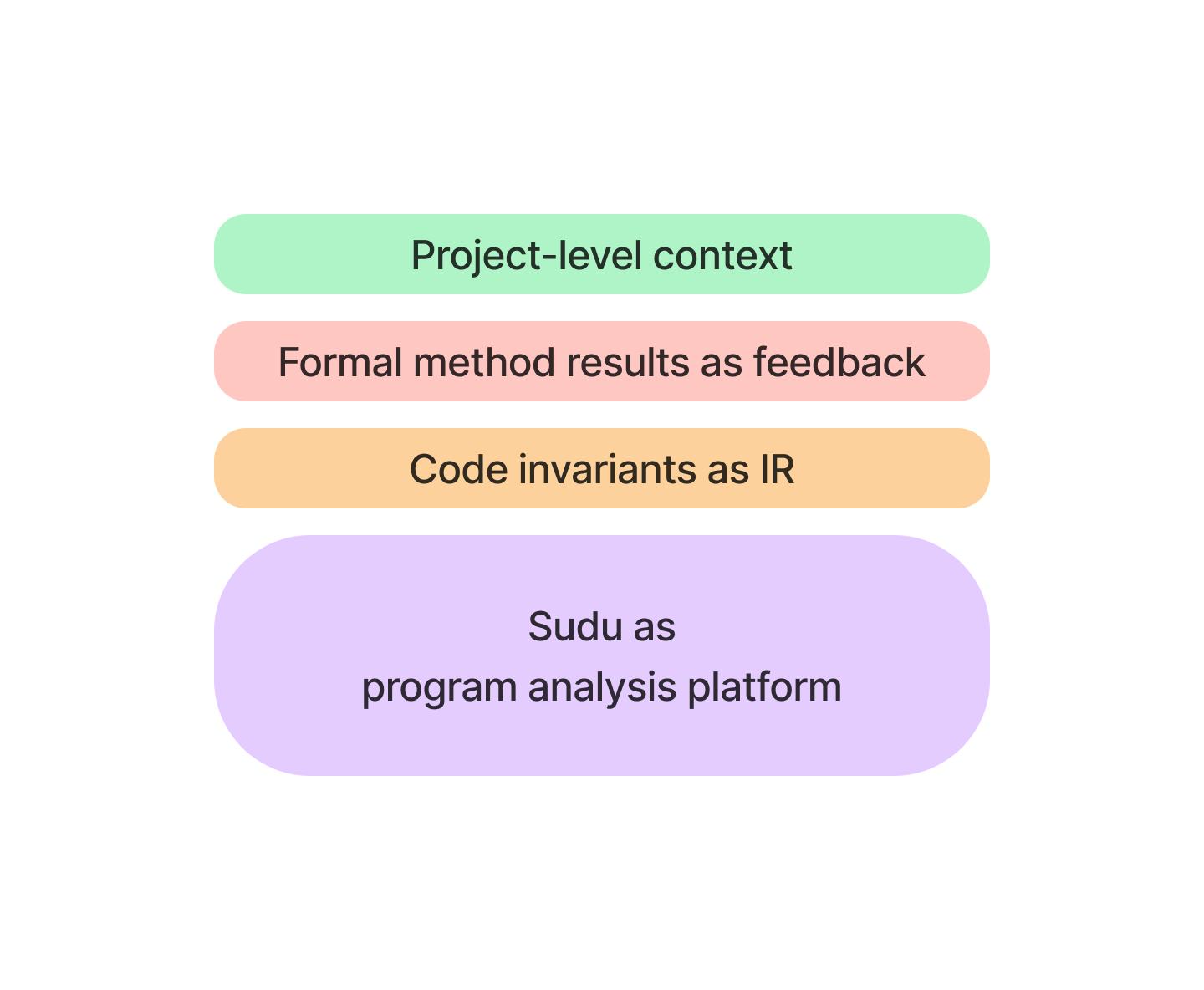Boosting Large Language Models by structured code models and code analysis
Large Language Models (LLMs) are now trained on unstructured streams of tokens. To improve LLM quality for code generation and code comprehension tasks, we plan to use code structure information to improve the model, and to verify the LLM output by formal methods.
#cooperation
To join us as ML Engineer, Software Developer or DevOps, please, contact our recruiter Stepan: telegram
General approach
Modern AI-powered solutions demonstrate incredible performance in a wide variety of areas such as natural language processing or image generation and recognition. Using Large Language Models (LLMs) for code area is a hot topic, but there is still a large room for improvement both for code comprehension and code generation. We believe that the most promising direction is combining LLMs with proven program analysis methods to get the most out of AI for developers.
Using larger project context
Current LLM algorithms show a high level of code comprehension but still suffer from using the narrow code context. Code comprehension ability is demonstrated mainly for relatively short code snippets, such as a function, or a single code file. In practice, software has a much more complex project structure. To increase the quality of LLM output, we develop techniques to make a LLM use the larger project context.
Reducing code vulnerability and deficiency
Code generation tools become widespread, and they all have one critical issue: LLMs may generate vulnerable code. We believe we can make LLMs output less deficient by providing them with feedback from formal methods.
Project objectives
Our project is aimed at developing basic technologies to increase LLMs output quality for code domain. The killer enhancement is leveraging LLMs with program analysis methods to make AI-based solutions reliable, safe, and applicable to real-life large-scale software projects.
Research directions
Based on these ideas, we propose three research directions:

Providing LLMs with project-level context
By project-level context, we mean structural code information such as call graphs, external dependencies, type information, etc. We are aimed at providing LLMs with the larger project contexts to gain higher LLM output quality for code-to-text tasks such as generating code summaries.
Our goals in this project are:
- to collect a code-to-text dataset from large projects (1–10 MLoC) for C++ and Java;
- to extract relevant project-level context from large code bases (1-10 MLoC) and to make a LLM use it;
- to increase the LLM’s pass@1 rate by 10% compared to ChatGPT and CopilotX on the collected dataset.
Providing LLMs with feedback from formal methods
Program analysis methods such as symbolic execution are efficient in finding deeply-hidden bugs, so they can serve as feedback for a LLM to make the model’s output less vulnerable.
Our goals in this project are:
- to reduce the number of vulnerabilities by 20% compared to ChatGPT in generated C code, using FormAI dataset,
which is the dataset of ChatGPT-generated code snippets labelled with vulnerability type such as:
- arithmetic overflow (AO),
- buffer overflow (BO),
- array bound violation (ABV),
- dereference of a null pointer (DFN);
- to collect the dataset of 100 000 Java code snippets labeled with vulnerability types;
- to gain a vulnerability rate, which is 20% less compared to Codex on the collected dataset.
Providing LLMs with code invariants as intermediate representations
Program analysis tools based on formal methods such as symbolic execution can provide a LLM with code invariants. These code invariants can help a LLM to “understand” code and, thus, to generate more comprehensive summaries. Invariants can also help a LLM to generate functionally correct and less vulnerable code.
Our goals in this project are:
- to increase the pass@1 rate for a docstring generation task by 10% compared to a base model (PanGu Coder) on HumanEval-X benchmark, which is the multi-language version of HumanEval dataset.
Practical applications: demo
To demonstrate the real-life applications of our approach, we plan to prototype the following solutions:
- a code summarization tool that can help developers with code reviews;
- a code refinement tool, which allows developers to pass the defective code to a LLM, so that the model can generate the bug fix.
